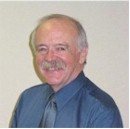Blaming the Lack of Exercise
By Dr. L. Lee Coyne, the Healthy Professor
 One of the most common new years resolutions deals with getting more exercise and losing some weight. This is also one of the most frustrated resolutions as many ask the question: If I exercise six days per week, eat low fat, no fat, low calorie everything, never eat in the evening, “Why am I not losing weight”?
One of the most common new years resolutions deals with getting more exercise and losing some weight. This is also one of the most frustrated resolutions as many ask the question: If I exercise six days per week, eat low fat, no fat, low calorie everything, never eat in the evening, “Why am I not losing weight”?
The answers are in understanding a combination of weight loss arithmetic and the physiology of metabolism.
First is the apparent over-emphasis on the concept that “I just have to exercise more”. If you understand that a pound of fat equals 3500 Calories and that running, walking or crawling a mile is worth 100 to 130 Calories (depending on how much you currently weigh) then it becomes apparent that if you only add exercise to your daily regime it will take 26 to 35 miles to burn off a pound of fat. That equals five to seven miles per day (sixty to ninety minutes) for five days per week to lose one pound in a week. This is further complicated by the intensity of the exercise. High intensity exercise produces lactic acid and lactic acid inhibits fat mobilization for energy so you end up burning primarily carbohydrates (sugars) and that stimulates unusual hunger at the end of the exercise. Is it any wonder that frustration soon prevails?
Second is the need to understand that your fat burning intensity zone occurs at a heart rate of approximately 180 minus your age in years. So at age forty the fat burning heart rate is around 180 - 40 = 140 beats per minute. For some that will be a fast walk and that will add more time to each mile but the fat burning will be more productive and no lactic acid will form to inhibit the process. Some exercise of progressive intensity 3 days per week has value in improving cardiovascular health but don’t confuse that part of your exercise program as part of your fat burning plan.
Third is the understanding that muscle loves to burn fat. So many ignore progressive resistance muscle building in their quest for more exercise. It seems unfair but those with more muscle burn more fat as long as they observe the intensity rules. Now to build more muscle you not only weight train but you must have a diet adequate in protein to provide enough new building blocks for the new muscle. So you must pay attention to your diet composition and that means more than just counting calories.
Fourth is the development of an eating plan that promotes fat burning and yet provides adequate energy to carry out a daily exercise program and still have a reserve for such necessities as work. Very low calorie diets will create weight loss but they also promote reduced metabolic rates and that creates a rebound of weight gain once the calorie restriction ends. Fat burning metabolism is created by the regular low intensity exercise mentioned and frequent eating of small meals and snacks that contain moderate levels of complex (low glycemic index) carbohydrates, adequate levels of protein and the good essential fatty acids. The long-term consequences of very low calorie diets includes the many implications of other nutritional inadequacies of starvation. Long-term positive results will never occur on a starvation-eating plan.
The happy balance for developing strategy to manage weight is that combination of regular moderate exercise including some weight training and an eating plan designed to burn fat. The eating plan is the most significant piece of the puzzle that will create a fat burning metabolism. Controlling the carbohydrate intake will control the fat storage hormone insulin. Elevated insulin prevents fat burning, promotes fat storage and signals hunger pains. Hunger pains are a sign of reduced metabolic rate, so never wait until you are hungry to eat. Eat according to a plan.
The simplicity of the recommended eating plan is summarized by:
- Eat protein in every meal and every snack.
- Eat some protein food first in every meal and snack.
- Choose low glycemic index carbohydrates and eat them in moderation.
- Include essential fatty acids in all meals. (need these essential fats to burn other fats).
- Include responsible supplementation daily to ensure adequate nutrition.
In reality, successful weigh management is 75% nutrition and 25% exercise.
Author:
Lee Coyne, Ph.D. is a nutritional consultant, lecturer and author of Fat Won't Make You Fat and the Lean Seekers coaching program. He may be reached at 1-800-668-4042 or by e-mail dr.coyne@leanseekers.com
Copyright Lee Coyne, Ph.D., reprinted with permission.
Desire To Know https://desiretoknow.com/Health-and-Fitness/Lee-Coyne/Lack-of-Exercise